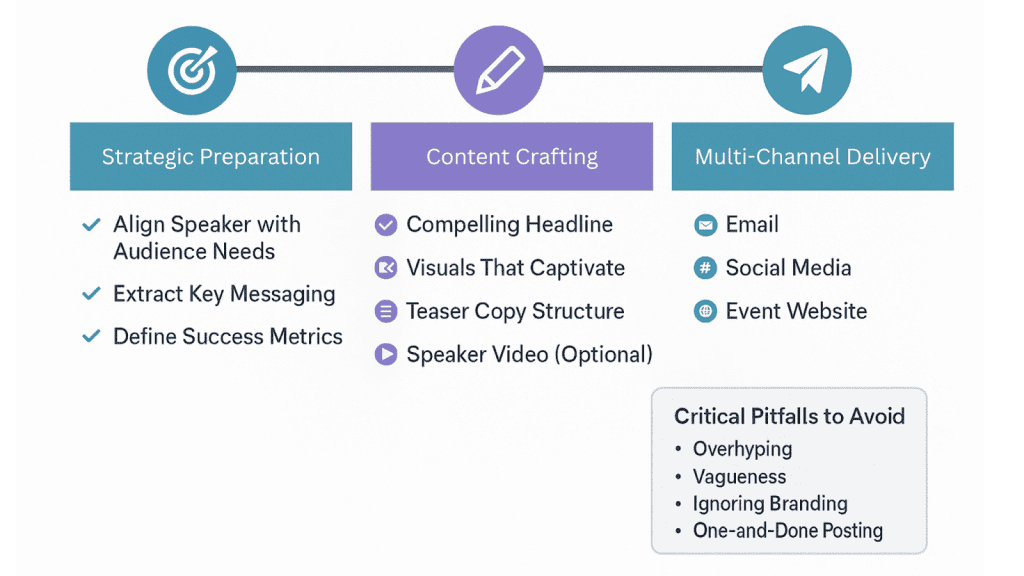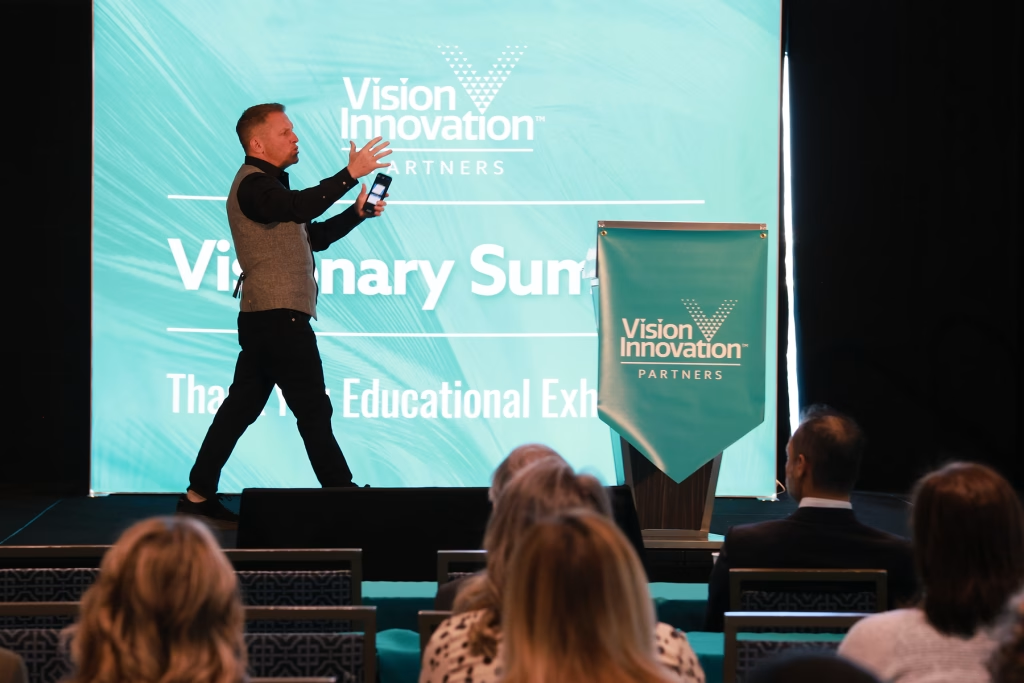An audience expects a keynote speaker to deliver an engaging and insightful presentation that informs, inspires, and makes a real difference. A great keynote speaker brings not only expertise in the field but also strong communication skills, stage presence, and the ability to connect with the audience.
However, it is the keynote speaker announcement that sets expectations, establishes credibility, and signals the value your event has to offer.
A poorly executed announcement of a motivational keynote speaker fails to generate interest, and can even undermine the speaker’s credibility.
Here, we present a clear keynote speaker announcement roadmap to help you craft a message that captures attention, builds excitement, and reinforces the value of your event.

Phase 1: Strategic Preparation
Align Speaker with Audience Needs
Popularity or credentials help. However, customer service motivational speakers can help only if their message resonates with your audience and insights directly address the pain points of the audience.
Conduct pre-event surveys to identify the pain points. This helps the speaker craft a core message that directly addresses those pain points.
| For example, “What’s your #1 challenge in delivering great customer service?“ |
Extract Key Messaging
Now the core message can be:
| “Making Customer Service the Heart of Customer Loyalty and Business Growth.“ |
Identifying pain points helps the speaker present tangible proof points.
Identify specific insights from the speaker’s talk to create a hook.
Spark curiosity and drive early engagement with FOMO-driven teases such as:
“John DiJulius will reveal his 5-step process to turn frustrated customers into lifelong advocates — a strategy used by brands like Starbucks and Chick-fil-A.”
Define Success Metrics
Track the following metrics to measure whether the speaker truly resonated with the audience and contributed to your event goals or not:
- Post-event survey feedback (rate impact on a scale of 1–10)
- Session attendance and retention
- Social media buzz before, during and after the session
- Internal feedback
- Impact on sales or lead quality
Phase 2: Content Crafting
Compelling Headline
Create a compelling headline that targets the desires of the audience and establishes credibility.
| For example:“John DiJulius to Headline Our 2025 Summit: Discover the Customer Service Strategy Behind Starbucks’ Global Loyalty.” |
Visuals That Captivate
A compelling keynote speaker announcement is more than just words. Command attention, evoke emotion, and build instant credibility with visual storytelling.
| Visual Type | Use Case | Example |
| Quote Graphic | Social media/email headers | Speaker Photo: “Your next angry customer is worth $10K in lifetime value” |
| Behind-the-Scenes | Humanize the speaker | Short video: “Building your loyalty roadmap” |
| Data Visualization | Prove results | Animated bar chart: “63% higher retention using our method” |
| Audience-Centric | Build connection | Composite image of diverse attendees with thought bubbles: “Will this fix our service gaps?” |
Teaser Copy Structure
Use video teaser clips to build credibility. It should be a short, benefits-driven video that highlights the speaker’s credibility.
Phase 3: Multi-Channel Delivery
The subject line should lead with curiosity or a benefit.
| Example: “Unlock the Customer Service Secrets of Starbucks — Live with John DiJulius” |
The header should feature a strong image or teaser video. The main content should focus on:
- The speaker’s relevance
- Key takeaways
Include buttons with action-oriented CTAs like:
- “Reserve My Spot”
- “See the Full Agenda”
Social Media
Use the unique strength of each social media platform to spark curiosity and shares:
| Platform | Tactics |
| Share a speaker quote or behind-the-scenes insightTag the speaker and invite dialogueUse professional visuals with branded overlays | |
| Instagram & Facebook | Post teaser videos, story countdowns, and carousel slidesUse speaker polls or quizzes in stories for engagement |
| X | Post soundbites from the speakerEngage with retweets from the speaker and audience members |
Event Website
The event website is the central hub for event credibility. This is where attendees learn more about the event. It should feature:
- A dedicated keynote section on the homepage
- Speaker bio, photo, quote, and teaser video
- Relevant credentials
- Press mentions, testimonial quotes, or brand logos
Critical Pitfalls to Avoid
Overhyping
You can attract attention with bold promises but if the announcement lacks substance, it leads to disappointment. Promise what the keynote motivational business speaker can genuinely deliver.
Vagueness
A generic message does not give specific reasons for the audience to show up. Clearly mention who will address what pain points and why it matters.
Ignoring Branding
The speaker announcement must match the visual identity of the event. Off-brand visuals, inconsistent tone or unaligned design can easily weaken the message.
Conclusion
The right way of announcing a keynote speaker sets the stage for the entire event. Always put the audience first when choosing a business inspirational speaker. Always highlight benefits over features. Your audience cares less about what the speaker will do and more about how it will help them solve a real problem or unlock value.
